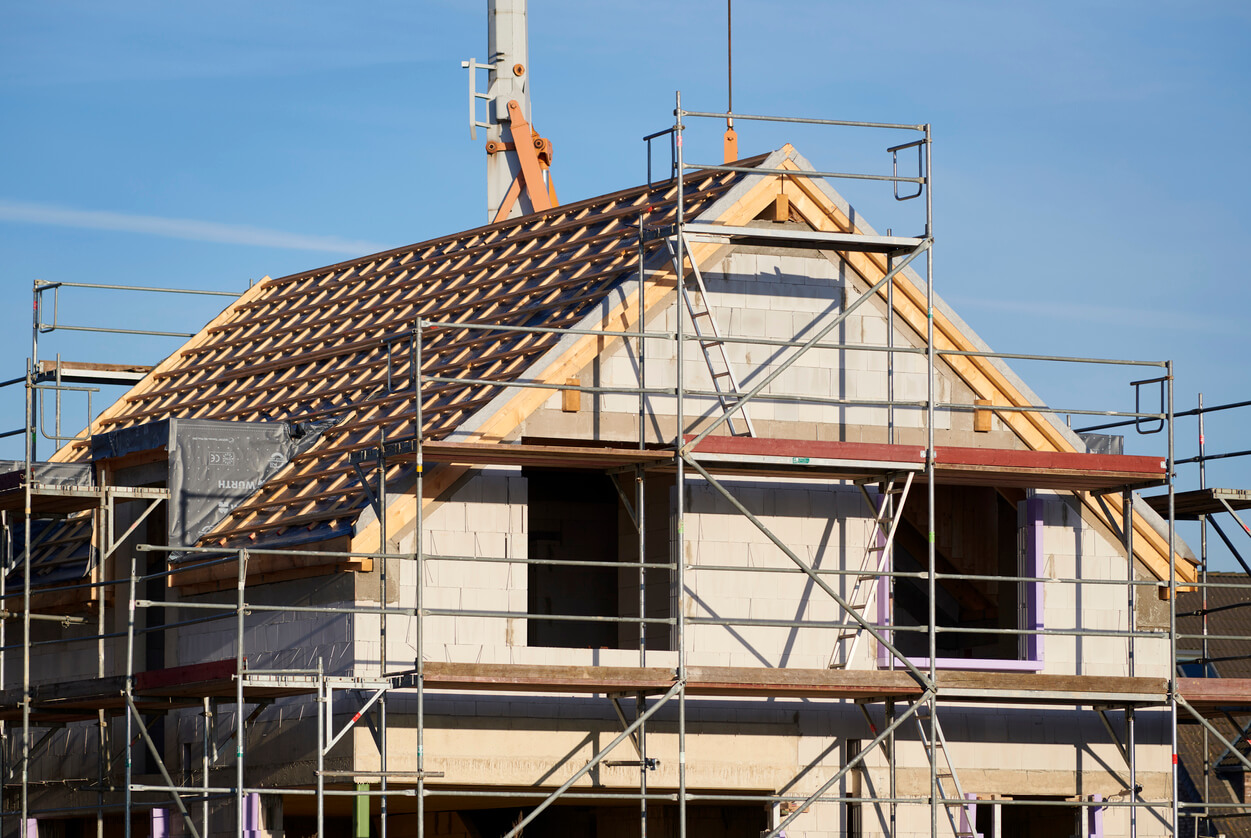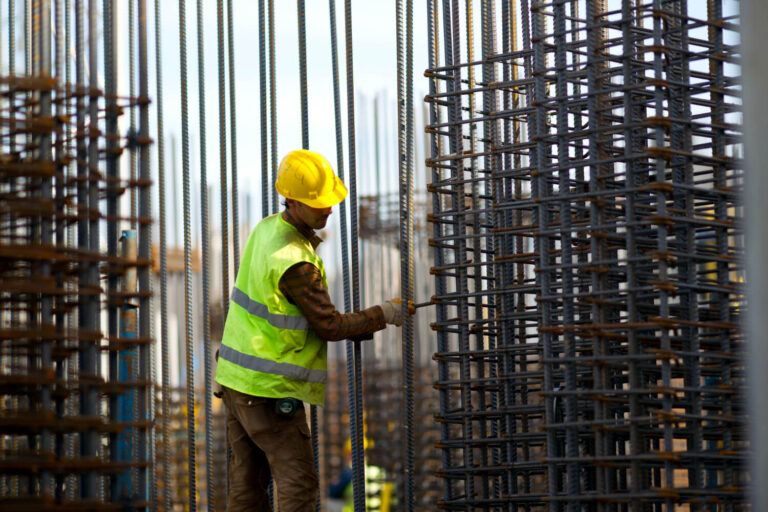The process of raising your homes foundation
Exploring the Hidden Challenges of Raising a House Foundation: A Comprehensive Guide
Are you considering raising your house foundation? Before you dive into this complex project, it’s important to understand the hidden challenges that may arise along the way. In this comprehensive guide, we will explore the intricacies of raising a house foundation and provide you with valuable insights to ensure a successful outcome.
Common signs that indicate the need for raising a house foundation
When it comes to raising a house foundation, there are several common signs that may indicate the need for such a project. One of the most obvious signs is noticeable cracks in the walls, floors, or ceilings of your home. These cracks can be an indication of foundation settlement or movement, which may require raising the foundation to prevent further damage.
Another sign to look out for is doors and windows that stick or don’t open and close properly. This can occur when the foundation has shifted, causing the frame of your home to become misaligned. Additionally, if you notice uneven floors or sloping in certain areas of your home, it may be a sign that the foundation needs to be raised to restore stability.
It’s important to note that while these signs may indicate the need for raising a house foundation, a professional assessment is necessary to determine the extent of the problem and the best course of action. Now that we’ve identified some common signs, let’s delve into the process of raising a house foundation.
The process of raising a house foundation
Raising a house foundation is a complex process that requires careful planning and execution. The first step in the process is to assess the structural integrity of your existing foundation. This involves conducting a thorough inspection to determine the extent of any damage or settlement.
Once the assessment is complete, the next step is to develop a detailed plan for raising the foundation. This plan will include factors such as the necessary equipment, the number of support piers required, and the timeline for completing the project. It’s crucial to work with a qualified structural engineer or foundation contractor to ensure that the plan is thorough and accurate.
With the plan in place, the actual process of raising the foundation can begin. This typically involves the use of hydraulic jacks to lift the house incrementally, allowing for the placement of support piers or beams beneath the foundation. The process is carefully monitored to ensure that the house is raised evenly and does not sustain any additional damage.
Once the foundation has been successfully raised, it is important to address any underlying issues that may have contributed to the need for raising in the first place. This may involve repairing or reinforcing the existing foundation, addressing drainage issues, or implementing preventative measures to mitigate future problems.
Potential challenges and risks involved in raising a house foundation
Raising a house foundation is not without its challenges and risks. One of the main challenges is the potential for damage to occur during the lifting process. While precautions are taken to minimize the risk, there is always a possibility of cracks forming in the walls, ceilings, or floors of the home.
Another challenge is the disruption to the occupants of the home during the project. Raising a house foundation typically involves significant construction work, which can be noisy and disruptive. It’s important to plan accordingly and make arrangements for alternative living arrangements if necessary.
In addition to these challenges, there are also potential risks involved in raising a house foundation. These risks include the possibility of encountering unexpected obstacles such as buried utilities or unforeseen structural issues. It’s important to work with experienced professionals who can assess and mitigate these risks to ensure a successful outcome.
Safety precautions and considerations during the foundation raising process
Safety is of utmost importance during the foundation raising process. It’s crucial to follow all necessary safety precautions to protect both the workers and the occupants of the home. This includes ensuring that the lifting equipment is properly maintained and operated by trained professionals.
In addition to equipment safety, it’s also important to consider the safety of the structure itself. Before raising the foundation, a thorough assessment should be conducted to identify any potential weaknesses or areas of concern. Reinforcements may need to be implemented to ensure the structure remains stable throughout the lifting process.
Furthermore, it’s important to communicate and coordinate with utility providers to ensure that any buried utilities are properly located and protected. This will help prevent damage to gas lines, water pipes, or electrical cables during the lifting process.
By taking these safety precautions and considerations into account, you can minimize the risk of accidents or damage during the foundation raising process.
Factors that impact the cost of raising a house foundation
The cost of raising a house foundation can vary depending on several factors. One of the main factors is the size and weight of the structure being lifted. Larger and heavier homes will require more labor and equipment, resulting in higher costs.
Another factor to consider is the extent of the foundation damage or settlement. If the damage is extensive, additional repairs or reinforcements may be required, increasing the overall cost of the project.
The accessibility of the foundation can also impact the cost. If the foundation is difficult to access or in a tight space, it may require specialized equipment or additional labor, resulting in higher costs.
Additionally, the location of the home can affect the cost of raising the foundation. Construction costs can vary depending on the local market conditions, including labor rates and material prices.
It’s important to obtain multiple quotes from reputable contractors to get a clear understanding of the costs involved in raising your house foundation. This will help you make an informed decision and avoid any surprises along the way.
Permits and regulations for raising a house foundation
Raising a house foundation typically requires obtaining permits and complying with local regulations. The specific requirements can vary depending on the location and the extent of the project.
Before starting the foundation raising process, it’s important to research and understand the permit requirements in your area. This may involve submitting detailed plans and engineering reports to the local building department for review.
Additionally, it’s important to comply with any zoning or setback requirements that may be applicable. These regulations are in place to ensure that the project does not have a negative impact on the surrounding properties or the community as a whole.
Working with a professional contractor who is familiar with the local regulations can help streamline the permit process and ensure compliance with all necessary requirements.
Hiring a professional contractor for raising a house foundation
When it comes to raising a house foundation, it’s crucial to hire a professional contractor with experience in this specific type of project. The contractor should have a solid track record of successfully completing similar projects and be able to provide references from satisfied clients.
When selecting a contractor, it’s important to consider their qualifications, certifications, and licenses. They should have the necessary expertise and knowledge to assess the condition of your foundation and develop an appropriate plan for raising it.
In addition to qualifications, it’s important to consider the contractor’s reputation and customer reviews. Look for contractors who have positive feedback and a history of delivering high-quality work.
Obtaining multiple quotes from different contractors will allow you to compare their services and prices. However, it’s important to not solely base your decision on price. The cheapest option may not always be the best, and it’s important to prioritize quality and expertise.
By hiring a professional contractor, you can ensure that the foundation raising process is carried out safely and effectively, resulting in a structurally sound and stable home.
Alternatives to raising a house foundation
Raising a house foundation is a significant undertaking that may not always be necessary or feasible. In some cases, there may be alternative solutions that can address the underlying issues without the need for extensive foundation work.
One alternative is underpinning, which involves strengthening the existing foundation by adding support piers or beams. This can help stabilize the structure and prevent further settlement or movement.
Another alternative is soil stabilization, which involves improving the soil conditions around the foundation to enhance its load-bearing capacity. This can be achieved through methods such as compaction, chemical grouting, or the installation of geotechnical fabrics.
It’s important to consult with a qualified professional to assess the specific needs of your home and determine the most appropriate solution. They will be able to provide expert advice and guide you towards the best course of action.
Conclusion: Is raising a house foundation the right choice for you?
Raising a house foundation is a complex and challenging project that requires careful consideration. By understanding the hidden challenges and potential risks involved, you can make an informed decision about whether this is the right choice for your home.
From identifying common signs that indicate the need for raising a house foundation to exploring the process itself, we’ve covered a wide range of topics in this comprehensive guide. We’ve also discussed the factors that impact the cost, the permits and regulations involved, and the importance of hiring a professional contractor.
It’s important to remember that every situation is unique, and what may be the right choice for one homeowner may not be the best option for another. By consulting with professionals and obtaining multiple opinions, you can gain a clear understanding of the best solution for your specific circumstances.
Whether you ultimately decide to raise your house foundation or explore alternative solutions, the most important thing is to prioritize the structural integrity and stability of your home. By doing so, you can ensure a safe and secure living environment for you and your family for years to come.







